Located in the Horn of Africa, Ethiopia is a nation with a deep cultural history and a rapidly evolving economy. The diversity in its job sectors paints a vivid picture of how Ethiopians make ends meet.
Agriculture remains the mainstay, accounting for the majority of employment. But beyond farming, there are vibrant handicraft traditions, bustling markets filled with local artisans, and slowly growing tech industries. Tourism plays a crucial role too, enriched by Ethiopia's ancient sites and unique cultural heritage.
This article delves into these various ways Ethiopians work, offering insights into both traditional and contemporary livelihoods.
- Introduction to Ethiopian Economy
- Agriculture: The Backbone of Ethiopia
- Handicrafts and Traditional Trades
- Emerging Industries and Technology
- Tourism and Culture-Based Employment
- Challenges and Future Prospects
Introduction to Ethiopian Economy
Ethiopia, nestled in the Horn of Africa, boasts one of the fastest-growing economies in the region. This diverse and multifaceted economy exemplifies the balance between deeply rooted traditional practices and modern advancements. The country's economic landscape is shaped by its extensive history, cultural richness, and strategic geographic position.
Agriculture is the backbone and the most significant sector, employing around 70% of Ethiopians. The nation's fertile land produces a variety of crops such as coffee, teff, and maize. Ethiopia stands as the birthplace of coffee, and it remains a major export product contributing significantly to the national revenue. Teff, an indigenous grain, is essential for making injera, a staple food in Ethiopian cuisine.
Beyond agriculture, manufacturing and services are gaining momentum. The government has placed substantial emphasis on industrialization, leading to the creation of several industrial parks aimed at boosting manufacturing capabilities. These developments are providing more job opportunities and enhancing the country's export potential.
In the service sector, tourism is flourishing thanks to Ethiopia's wealth of historical sites and unique cultural heritage. The rock-hewn churches of Lalibela, the ancient city of Axum, and the Simien Mountains National Park attract tourists from around the globe. Additionally, Addis Ababa, the capital city, serves as Africa's diplomatic hub hosting the African Union's headquarters, further bolstering the service economy.
Investment in infrastructure has been a focal point for Ethiopia. Projects like the Grand Ethiopian Renaissance Dam (GERD) symbolize the country's drive for economic self-reliance and regional influence. This massive hydroelectric project aims to make Ethiopia an energy powerhouse in the region, stimulating economic growth through electrification and industrial development.
When discussing Ethiopia's economic potential, Ethiopian Prime Minister Abiy Ahmed remarked, "Our nation stands at the brink of economic transformation, a change driven by our people's resilience and innovation."
However, challenges such as political instability, ethnic conflicts, and environmental issues like recurring droughts cannot be overlooked. These factors impact economic stability and growth, necessitating ongoing efforts in policy and governance to create a more robust and inclusive economy.
Highlighting the country's agricultural outputs:
| Product | Contribution to GDP (%) |
|---|---|
| Coffee | 34 |
| Teff | 25 |
| Maize | 15 |
In summary, Ethiopia's economy is a tapestry of traditional livelihoods and emerging modern industries. It is a land where ancient customs meet contemporary progress, creating a unique and vibrant economic vista. Ongoing investments in infrastructure and industry, coupled with a rich cultural heritage, position Ethiopia as a key player on the African economic stage.
Agriculture: The Backbone of Ethiopia
Agriculture is undeniably the bedrock of Ethiopian livelihood. This ancient land has long been revered for its fertile valleys and diverse ecosystems, providing the perfect backdrop for a thriving agricultural sector. The heart of Ethiopia beats with farms, where families work together to cultivate a variety of crops ranging from coffee to teff, the grain that forms the basis of the nation’s staple food, injera.
Coffee, often referred to as Ethiopia's “black gold,” is one of the country’s most prized exports. Ethiopia is recognized as the birthplace of coffee, with rich, aromatic beans harvested from the lush highlands. Coffee cultivation is not just an economic activity; it's woven into the cultural fabric of the nation. Farmers take great pride in their coffee trees, often passing down their cultivation techniques through generations.
Teff, a tiny but mighty grain, is another cornerstone of Ethiopian agriculture. Teff fields stretch across the countryside, forming an integral part of the rural landscape. This super grain is incredibly nutritious, packed with iron and protein, making it a vital food source for millions of Ethiopians. The labor-intensive process of cultivating and harvesting teff provides employment to many, highlighting the communal nature of farming in Ethiopia.
Aside from coffee and teff, Ethiopia produces several other significant crops, including maize, wheat, and barley. Livestock farming also plays a crucial role, with cattle, sheep, and goats dotting the rural landscapes. These animals are not only sources of meat and milk but also symbols of wealth and status within communities.
Despite the significance of agriculture, Ethiopian farmers face numerous challenges. Unpredictable weather patterns, soil degradation, and limited access to modern farming tools and techniques can hinder productivity. However, initiatives aimed at providing training, resources, and sustainable practices are gradually making a difference. According to the World Bank, agricultural productivity in Ethiopia has been steadily increasing over the past decade, a testament to the resilience and innovation of its farmers.
The Ethiopian Ministry of Agriculture asserts, “Improving agricultural productivity is key to ensuring food security and enhancing the livelihoods of our farmers.”Indeed, the government's commitment to agrarian reform and investment in irrigation projects is paving the way for a more sustainable and prosperous agricultural sector.
| Crop | Annual Production (tons) |
|---|---|
| Coffee | 450,000 |
| Teff | 6,000,000 |
| Maize | 8,000,000 |
| Wheat | 4,500,000 |
In conclusion, agriculture remains the backbone of Ethiopia, nurturing not only the nation's economy but also its cultural and social structures. Through relentless hard work, farmers sustain both their families and the broader Ethiopian community, embodying the spirit of resilience and adaptability that is quintessentially Ethiopian.
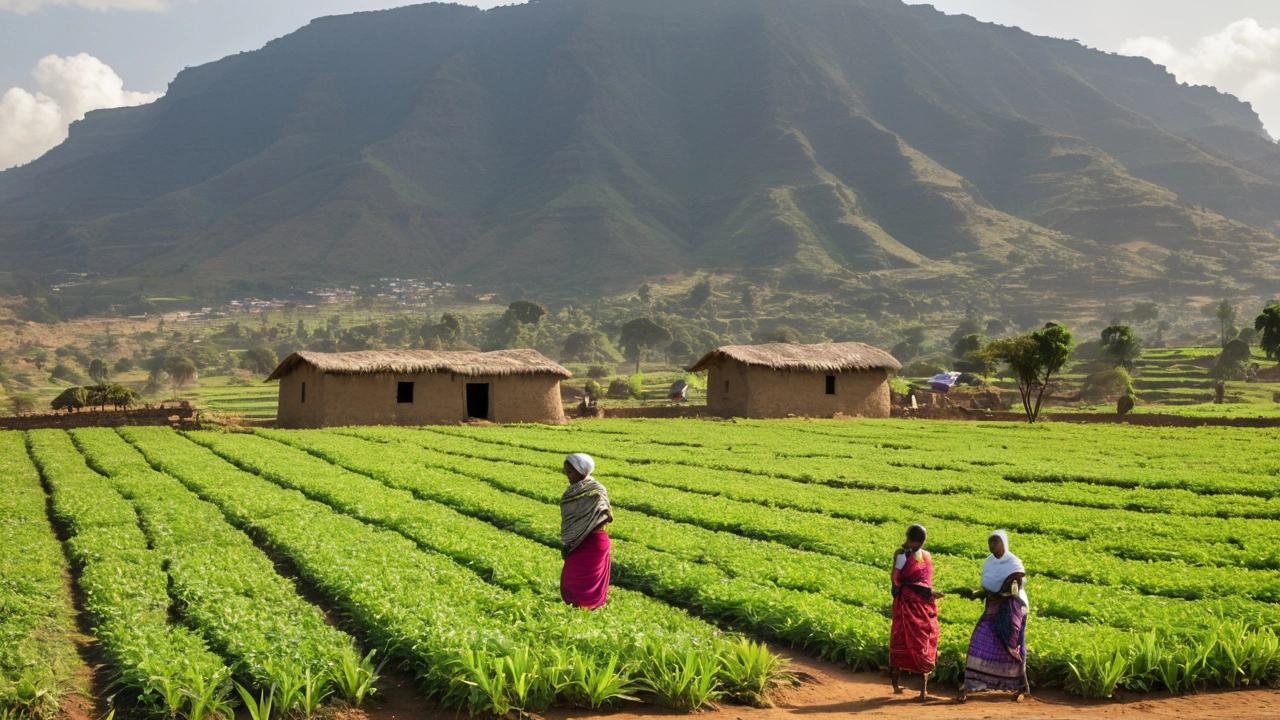
Handicrafts and Traditional Trades
The heart and soul of Ethiopia’s cultural fabric lie in its traditional trades and handicrafts. These time-honored skills have been passed down through generations and continue to play a significant role in the livelihoods of many Ethiopians. Handicrafts offer a unique insight into the country’s artistic heritage, from intricate weaving to delicate pottery.
One of the most well-known handicrafts is the mesob, a colorful woven basket used for serving injera, Ethiopia’s staple food. The craft of weaving these baskets is often a communal activity, with women gathering to weave intricate patterns. This not only sustains them financially but also strengthens community bonds. Ethiopian textiles, especially the traditional shema cloth, are another highlight. Often used to make traditional garments like the habesha kemis for women and netela, these textiles are hand-woven and characterized by their beautiful, colorful designs.
The city of Harar, in particular, is famous for its intricate jewelry and silverwork. Harari women craft stunning pieces that reflect the city’s rich history and blend of cultures. Pottery is another significant craft, especially in regions like Tigray. Artisans hand-shape clay into pots, dishes, and other utensils using techniques that have remained unchanged for centuries.
Leatherwork is also widespread, with artisans creating items that range from everyday tools to beautiful decorative pieces. The Lalibela area is well-known for its traditional leather-bound Bibles. The craftsmanship involved in these trades not only highlights the skills of the artisans but also their deep connection to Ethiopia's cultural heritage.
Mayda Oumer, an artisan from Addis Ababa, once said,
“Our crafts are not just products; they are a way of life, a heritage that we cherish and share with the world.”This reflects how deeply entrenched these traditions are in Ethiopian society. These crafts are often showcased in markets and festivals, like the Addis Ababa Handicraft Market, providing a vital income source while preserving cultural traditions.
Ethiopian handicrafts are more than objects; they are stories woven, molded, and carved by the hands of skilled artisans. Whether it's weaving baskets, shaping pottery, or crafting silver jewelry, these trades are a significant part of Ethiopia's economic and cultural landscape.
Emerging Industries and Technology
While agriculture continues to dominate, Ethiopia is making significant strides in emerging industries and technology. The urban landscape is changing rapidly, and new opportunities are blooming, especially in the tech sector.
The capital city of Addis Ababa has become a hub for tech startups. Young entrepreneurs are driving this shift, creating innovative solutions that address local challenges. From mobile banking to health apps, these ventures are transforming various aspects of Ethiopian life. For example, apps like HelloCash have revolutionized financial transactions for those without access to traditional banking services.
In addition to tech startups, Ethiopia is home to growing manufacturing industries. Industrial parks, such as those in Hawassa and Debre Berhan, are attracting international investors. These parks focus on producing textiles, garments, and electronics, providing jobs to thousands of Ethiopians and stimulating economic growth.
Elias Geneti, president of the Addis Ababa Chamber of Commerce, noted, "The rise of technology and manufacturing sectors is vital for Ethiopia's economic future. These industries offer new job opportunities and encourage global partnerships, driving socioeconomic development."
The Ethiopian government has played a significant role in fostering this growth. Policy initiatives aimed at improving infrastructure, education, and investment conditions have helped create a conducive environment for these industries to thrive. The Ethio Telecom expansion and the rollout of 4G services have further facilitated connectivity, making tech-based solutions accessible to a broader population.
Education is another cornerstone of this tech revolution. Universities across the country are offering specialized programs in information technology and engineering. This emphasis on education ensures a consistent influx of skilled professionals ready to contribute to emerging sectors. Additionally, tech hubs like IceAddis provide mentorship and resources to budding entrepreneurs, nurturing their ideas from conception to execution.
The potential for digital agriculture is also being explored. Technologies such as drones and precision farming tools are being introduced to improve crop yields and resource management. These advancements not only enhance productivity but also make farming more sustainable in the face of climate challenges.
Renewable energy is another area where Ethiopia shows promise. With its abundant natural resources, the country is investing heavily in hydroelectric power, wind farms, and solar energy projects. The Grand Ethiopian Renaissance Dam is a prime example of such initiatives, aiming to boost the nation's energy capacity and provide a reliable electricity source for industrial and residential use.
As these emerging industries and technological advancements continue to evolve, they hold the potential to significantly alter Ethiopia's economic landscape. They create pathways for enhanced employment opportunities and pave the way for a more diversified and resilient economy.
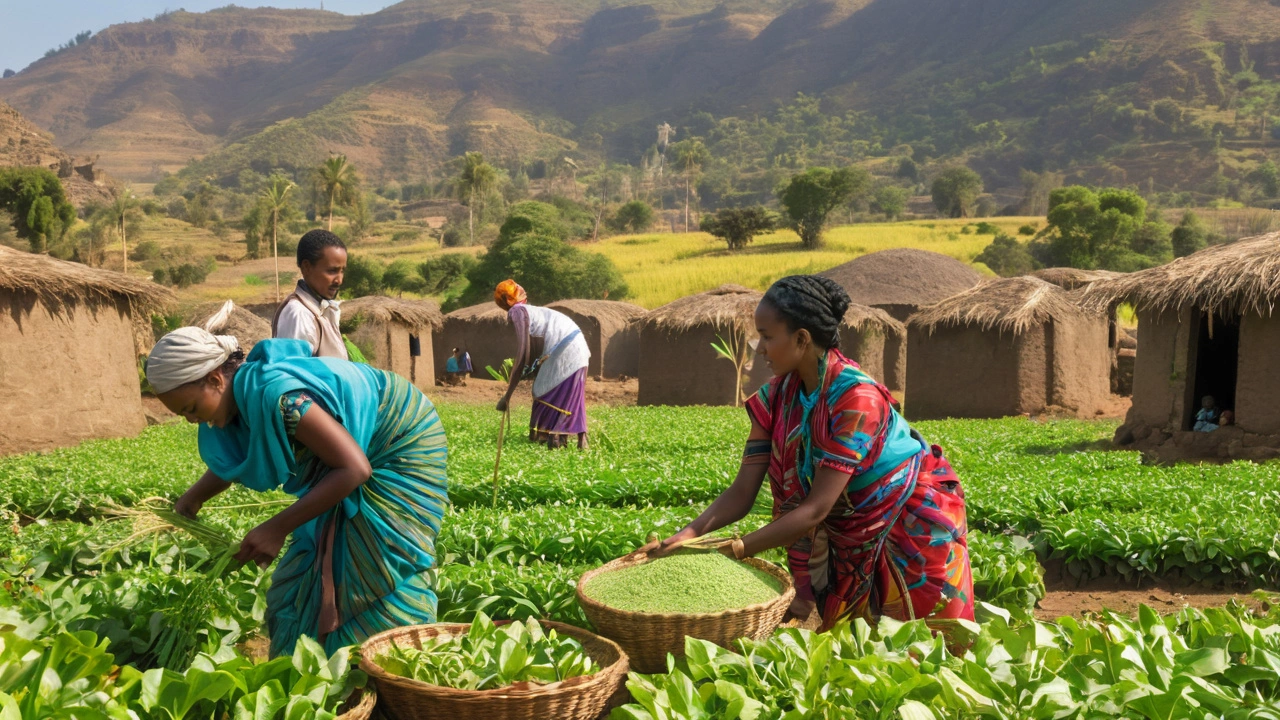
Tourism and Culture-Based Employment
Tourism in Ethiopia is not just about visiting landmarks; it’s an immersive experience deeply rooted in culture and traditional practices. The country boasts a wealth of historical sites, including the famous rock-hewn churches of Lalibela and the ancient ruins of Aksum. These sites draw thousands of visitors each year, boosting local economies and providing jobs.
Tour guides are among the most visible representatives of this industry. Knowledgeable about the country's rich history and fluent in multiple languages, these guides often provide a personalized experience that connects visitors to Ethiopia's heritage. In major tourist hubs like Addis Ababa and Gondar, tour guide services proliferate, ensuring that tourists get the most out of their visits.
Local artisans also find opportunities through tourism. Craft markets in cities such as Shiro Meda in Addis Ababa offer a wide range of handmade goods, from woven textiles to intricate jewelry. These crafts are not only a source of income but also a way to preserve and promote Ethiopian artistic traditions. When tourists purchase these unique items, they are supporting local economies and helping to sustain age-old artistic skills.
The hospitality industry plays a key role too. Hotels, guesthouses, and restaurants employ a significant number of people. Beyond accommodation and food services, these establishments often feature cultural performances and traditional music, providing additional employment for musicians and dancers. For example, the city of Bahir Dar near Lake Tana is known for its lively cultural scene, with numerous establishments offering nightly shows.
Adventure tourism is growing in popularity as well. Treks in the Simien Mountains National Park and excursions to the Danakil Depression draw adventurers looking for unique experiences. Here, community-based tourism initiatives are particularly impactful. Local communities often manage these programs, ensuring that the benefits of tourism reach residents directly. This form of tourism not only provides jobs but also encourages the conservation of natural resources.
According to a 2023 report by the Ministry of Culture and Tourism, the tourism sector employed over 2 million people, contributing significantly to the national GDP. Rahmeto Abebe, a senior researcher, commented on the sector's potential:
"Ethiopia's tourism industry has the power to transform local communities. By promoting sustainable tourism practices, we can preserve our heritage while creating economic opportunities."
Challenges persist, however. Political instability and occasional conflicts can deter tourists. Infrastructure development is another area where improvement is needed. Better roads, reliable transportation, and quality services can make a big difference in attracting and retaining tourists. Despite these hurdles, the sector shows promise, and continuous efforts are being made to strengthen it.
Challenges and Future Prospects
Ethiopia faces several challenges as it navigates its way toward economic development. One of the most pressing issues is poverty, which continues to affect a significant portion of the population. Despite notable progress in recent years, many Ethiopians still struggle to meet basic needs. Limited access to education, healthcare, and clean water intensifies the problems associated with poverty.
Another major challenge is the country's reliance on agriculture. While agriculture is the backbone of Ethiopia’s economy, it is highly susceptible to climate change. Droughts and inconsistent rainfall have dire consequences on agricultural productivity. This instability can lead to food insecurity and economic strain for a nation dependent on farming.
A recent study by the World Bank noted, "Ethiopia's economic growth remains vulnerable to climate shocks, and creating a more resilient agricultural sector is crucial for sustained progress."
The issue of urbanization poses another set of challenges. As more people migrate from rural areas to cities in search of better opportunities, urban centers are struggling to keep up with the demand for jobs, housing, and services. Unemployment rates in urban areas are rising, and informal employment is becoming more common, often without adequate labor protections.
However, amidst these challenges, Ethiopia also has several promising prospects. The country is investing heavily in infrastructure development, from roads and bridges to telecommunication networks. These investments aim to boost connectivity and enhance economic productivity. There is also a concerted effort to diversify the economy by promoting sectors like technology, tourism, and manufacturing.
Emerging Sectors
Technology and innovation are beginning to find a foothold in Ethiopia. The government has established several tech parks and is promoting ICT (Information and Communication Technology) as a key area for growth. The advent of mobile banking and e-commerce is paving the way for new business opportunities and financial inclusion.
Tourism is another sector with significant potential. Ethiopia is home to several UNESCO World Heritage sites, including the rock-hewn churches of Lalibela and the ancient city of Aksum. By promoting sustainable tourism, the country hopes to attract more international visitors and generate revenue that can support local communities.
Additionally, the manufacturing sector shows promise as the government focuses on the development of industrial parks. These parks aim to attract foreign investment and create jobs, especially for the youth. The Hawassa Industrial Park, for example, has already garnered attention for its eco-friendly initiatives and is a model for future industrial expansion.
Export Opportunities are also being explored. Ethiopia has a rich heritage in coffee production, and efforts are being made to boost coffee exports by improving quality and branding. Similarly, the country is investing in horticulture to increase exports of flowers, fruits, and vegetables. These efforts are expected to bring in more foreign exchange and create job opportunities.
To conclude, while Ethiopia faces a myriad of challenges in achieving sustainable economic development, there are also numerous prospects that provide hope for the future. By addressing the root causes of its problems and capitalizing on emerging opportunities, Ethiopia stands a strong chance of ensuring a better livelihood for its people.
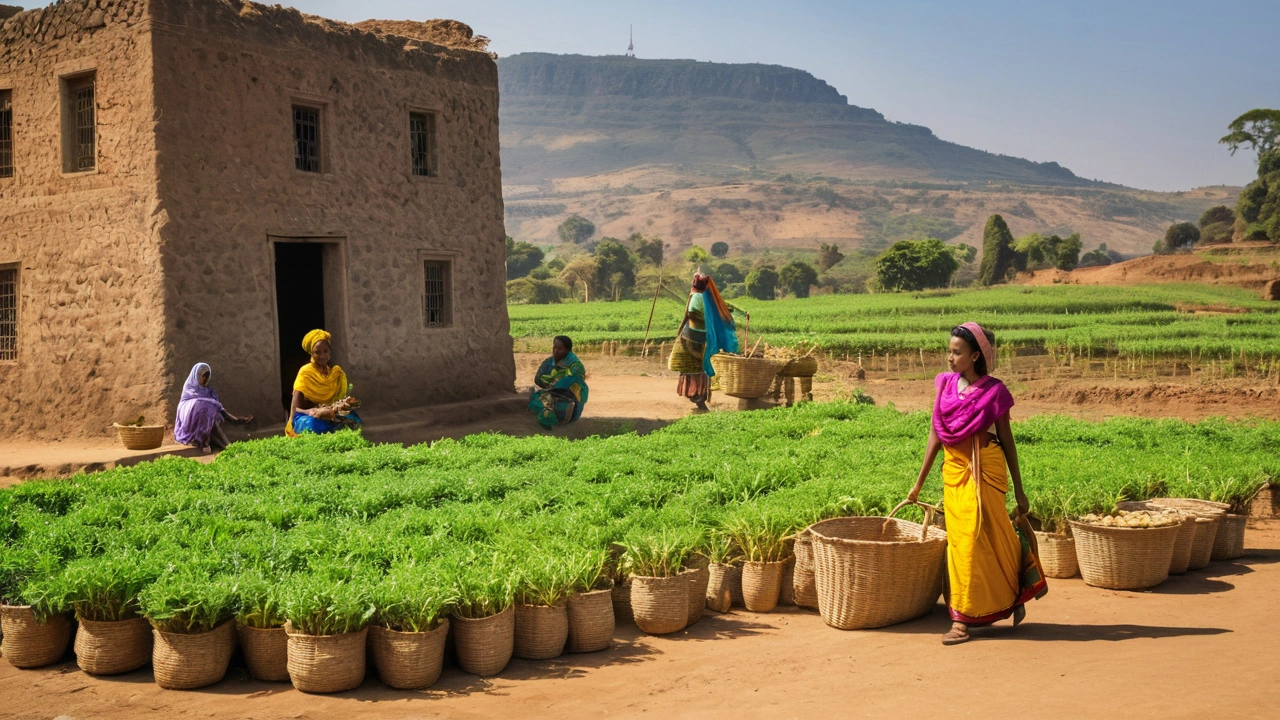
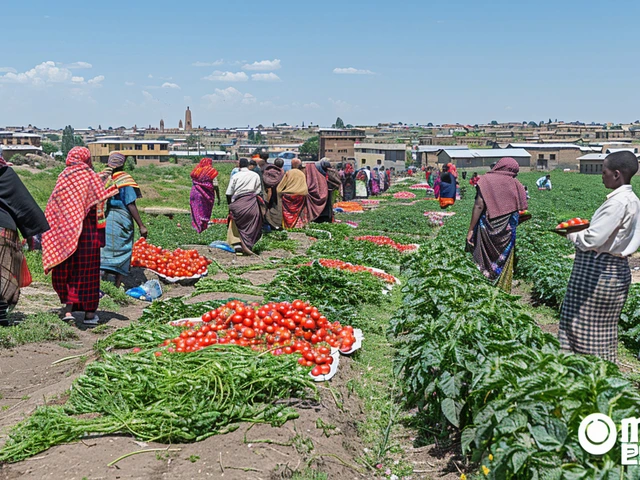 Why Ethiopia Stands Out: Unique Aspects of an Exceptional African Nation
Why Ethiopia Stands Out: Unique Aspects of an Exceptional African Nation
 Using USD in Ethiopia: What Travelers Need to Know
Using USD in Ethiopia: What Travelers Need to Know
 Is PayPal Available and Legal to Use in Ethiopia?
Is PayPal Available and Legal to Use in Ethiopia?
 Top Occupations in High Demand for 2024
Top Occupations in High Demand for 2024
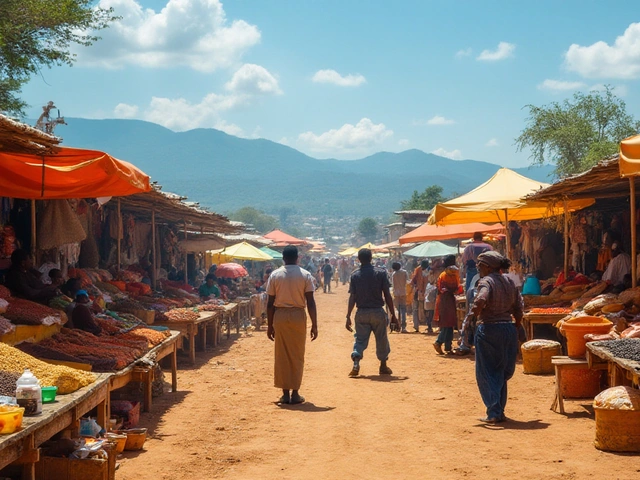 Profitable Business Opportunities in Ethiopia
Profitable Business Opportunities in Ethiopia
Frankie Mobley
August 8, 2024 AT 17:46Ethiopia’s job landscape is as varied as its terrain, ranging from the hills where coffee beans are hand‑picked to bustling markets in Addis Ababa where artisans sell woven goods. Agriculture still employs the majority of the population, and the rhythm of the seasons dictates daily life for many families. Coffee, often called “black gold,” not only fills export coffers but also brings together generations of farmers who share knowledge about planting and harvesting. Teff, the tiny grain that makes injera, provides a staple food and a reliable source of income for countless households. Livestock such as cattle, goats, and sheep are integral to rural economies, offering meat, milk, and a traditional store of wealth. Handicrafts like the mesob basket and shema cloth keep cultural traditions alive while giving women a chance to earn cash at local markets. The city of Harar is famous for its silver jewelry, and these pieces attract tourists who want authentic souvenirs. In recent years, tech startups have begun to sprout in Addis, delivering mobile banking solutions that reach even the most remote villages. These startups are often founded by young Ethiopians who have studied abroad and returned with fresh ideas. Manufacturing parks in Hawassa and Debre Berhan are creating thousands of jobs in textiles and garment production. Renewable energy projects, especially the Grand Ethiopian Renaissance Dam, promise more electricity for factories and homes. Tourism continues to grow, with sites like Lalibela and the Simien Mountains drawing visitors who spend money on guides, hotels, and local food. Education initiatives are helping workers gain new skills, from digital literacy to advanced farming techniques. While challenges such as drought and political tension remain, the combination of tradition and innovation keeps the Ethiopian job market resilient. Overall, the blend of age‑old practices and modern industries paints a hopeful picture for livelihoods across the country.
ashli john
August 8, 2024 AT 17:48Love how Ethiopia mixes old traditions with new tech, it’s truly inspiring
Kim Chase
August 8, 2024 AT 18:03I think it’s awsome how the community embraces both the past and the future, especially when you see kids learning coding alongside their grandparents tending fields. The mix of hand‑crafted goods and digital apps really shows Ethiopia’s adaptable spirit. Even the challenges like drought get tackled with creative solutions like water‑catching barrels and solar irrigation that many locals are trialing. It’s a good example of how inclusive growth can happen when people share knowledge across generations. The progress is definately something to celebrate.
David Werner
August 8, 2024 AT 18:05What most people don’t see is the hidden agenda behind the tech boom – foreign investors are quietly buying up the data pipelines and turning Ethiopia’s digital future into a surveillance net. The new factories aren’t just making clothes; they’re embedding chips into equipment that can be used to monitor agricultural output and control the market. Even the renewable energy projects are being steered by corporations that want to dictate who gets power and who stays in the dark. It’s a drama playing out behind the smiles of tourists and the glitter of new gadgets, and the real victims are the farmers who lose control over their own harvests.
Paul KEIL
August 8, 2024 AT 18:20From a macro‑economic standpoint the Ethiopian labor market exhibits sectoral asymmetry with agrarian dominance supplanting value‑added diversification. The capital‑intensive manufacturing clusters lack the requisite scale economies, thereby constraining productivity gains. Moreover, the tourism sector suffers from inadequate infrastructural elasticity, leading to suboptimal tourist throughput. Policy frameworks should prioritize skill‑based reallocation mechanisms to mitigate structural unemployment. In essence the current growth narrative is overly optimistic yet empirically unsubstantiated.